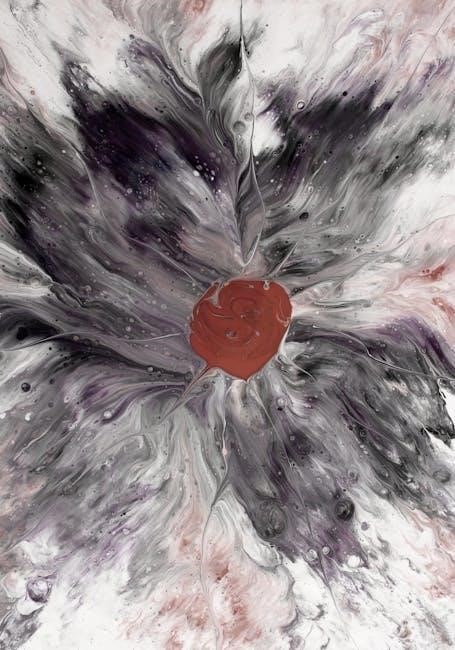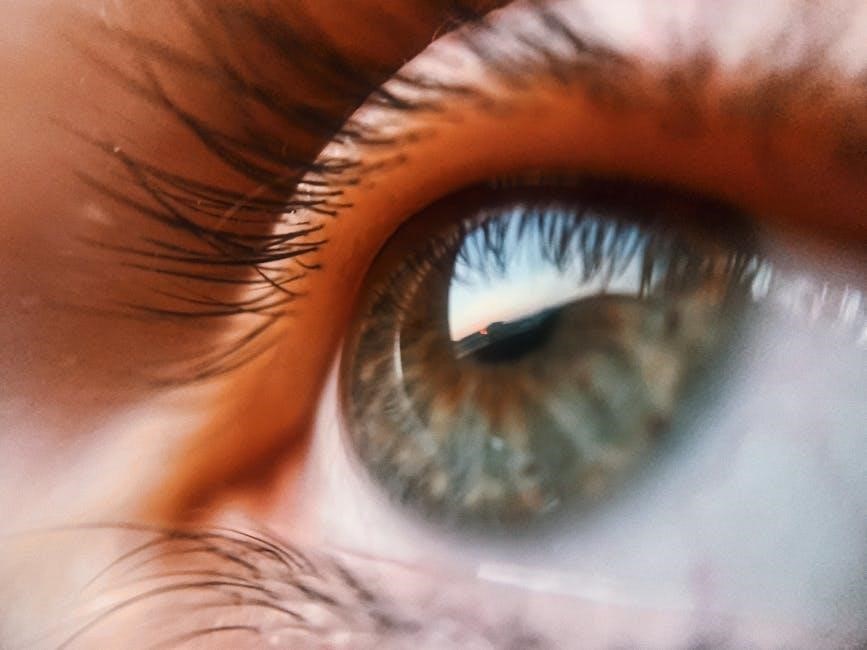
Image-Guided Superficial Radiation Therapy (IG-SRT) is a non-invasive, low-dose X-ray treatment for non-melanoma skin cancers, guided by ultrasound imaging to precisely target cancer cells while sparing healthy tissue.
What is Image-Guided SRT?
Image-Guided Superficial Radiation Therapy (IG-SRT) is a cutting-edge, non-invasive treatment designed for non-melanoma skin cancers, such as basal and squamous cell carcinomas. It uses low-dose X-ray energy to target cancer cells while preserving healthy tissue. Unlike traditional radiation therapy, IG-SRT employs advanced ultrasound imaging to visualize the tumor in real-time, ensuring precise delivery of radiation. This technology allows clinicians to monitor the treatment area accurately, minimizing damage to surrounding skin. IG-SRT is a pain-free, surgery-free alternative that offers high efficacy with minimal side effects, making it ideal for sensitive or hard-to-treat areas. Its non-invasive nature also supports superior cosmetic outcomes and patient comfort.
Development of IG-SRT
The development of Image-Guided Superficial Radiation Therapy (IG-SRT) marks a significant advancement in skin cancer treatment. Building on traditional Superficial Radiation Therapy (SRT), IG-SRT incorporates cutting-edge imaging technology, such as high-frequency ultrasound, to enhance precision and safety. This innovation allows clinicians to visualize tumors in real-time, ensuring accurate targeting of cancer cells while sparing healthy tissue. Recent advancements in IG-SRT have improved its efficacy, with studies demonstrating superior outcomes compared to non-image-guided radiation therapies. The integration of ultrasound imaging has also expanded its applications, making it a preferred treatment for basal and squamous cell carcinomas. IG-SRT’s evolution reflects ongoing efforts to optimize non-invasive cancer treatments, offering patients a safer and more effective alternative to surgery.
How IG-SRT Differs from Traditional SRT
Image-Guided Superficial Radiation Therapy (IG-SRT) differs from traditional SRT by incorporating advanced imaging technology, such as ultrasound, to guide radiation delivery. This real-time visualization enables precise targeting of cancer cells, reducing exposure to healthy tissue. Unlike traditional SRT, which lacks image guidance, IG-SRT improves accuracy and minimizes side effects. Additionally, IG-SRT uses lower energy X-rays, making it safer for superficial skin cancers. The integration of imaging also allows for dynamic adjustments during treatment, ensuring optimal outcomes. This technological advancement makes IG-SRT a more refined and effective option compared to conventional SRT methods, offering improved precision and patient comfort while maintaining efficacy in treating non-melanoma skin cancers.

How IG-SRT Works
Image-Guided SRT uses ultrasound imaging to visualize skin cancers, employing low-dose X-rays to precisely target cancer cells while sparing surrounding healthy tissue during treatment sessions in a dermatology office.
Technology Behind IG-SRT
The technology behind Image-Guided SRT involves advanced imaging systems, such as high-frequency ultrasound, to visualize skin cancers in real-time. This allows for precise targeting of cancer cells while sparing healthy tissue. The system uses a low-energy X-ray source to deliver controlled radiation doses. An integrated ultrasound probe provides detailed images of the tumor, enabling accurate measurements and treatment planning. The device’s arm positions the X-ray source accurately over the treatment area, ensuring optimal energy delivery. Additionally, sophisticated software processes imaging data to create personalized treatment plans, optimizing dosage and minimizing side effects. This combination of imaging and radiation technology ensures high precision and safety, making IG-SRT a cutting-edge treatment for non-melanoma skin cancers.
Role of Imaging in IG-SRT
Imaging plays a critical role in Image-Guided SRT by providing real-time visualization of the tumor and surrounding tissue. High-frequency ultrasound technology generates detailed images of the cancer site, enabling precise measurement of tumor size and shape. These images guide the delivery of radiation, ensuring accurate targeting of cancer cells while protecting healthy tissue. The ultrasound probe allows both the dermatologist and patient to view the tumor on a screen, fostering transparency and confidence in the treatment process. Imaging also aids in monitoring progress throughout the treatment sessions, ensuring adjustments are made as needed for optimal outcomes. This real-time guidance enhances the effectiveness and safety of the procedure, making IG-SRT a highly precise and patient-friendly option for skin cancer treatment.
Delivery Process of IG-SRT
The delivery process of Image-Guided SRT begins with the application of ultrasound gel to the treatment site. A handheld imaging wand is then used to capture high-resolution images of the tumor, which are displayed on a screen for both the patient and practitioner to view. These images allow precise measurement of the tumor’s size and shape, enabling accurate calculation of the radiation dose. Once the treatment area is defined, the device delivers low-energy X-rays directly to the cancer cells. The process is pain-free and typically takes about 15 minutes per session. Patients usually require multiple sessions over several weeks, with the exact number depending on the severity of the cancer. This method ensures minimal disruption to healthy tissue, making it a convenient and effective treatment option.

Benefits of IG-SRT
Image-Guided SRT offers a non-invasive, pain-free treatment with minimal side effects and high precision, ensuring superior cosmetic outcomes while maintaining patient comfort and convenience throughout the process.
Non-Invasive Nature
Image-Guided SRT is a groundbreaking, non-invasive treatment that eliminates the need for surgery or incisions, making it an attractive option for patients seeking minimal disruption to their lives. Unlike traditional surgical methods, IG-SRT uses advanced imaging technology to deliver precise, low-dose X-ray energy directly to cancer cells. This approach avoids damaging healthy tissue, reducing the risk of scarring and promoting faster healing. Patients experience minimal discomfort during sessions, which are typically short and require no downtime. The non-invasive nature of IG-SRT also ensures that patients can maintain their normal daily routines throughout the treatment process, offering both convenience and peace of mind. This method is particularly beneficial for sensitive or hard-to-treat areas, providing a gentle yet effective solution for skin cancer treatment.
Minimal Side Effects
Image-Guided SRT is renowned for its minimal side effects, making it a preferred choice for patients seeking gentle yet effective treatment. The low-dose X-ray energy targets cancer cells precisely, minimizing harm to surrounding healthy tissue. This reduces the risk of complications compared to traditional therapies. Common side effects are mild and temporary, such as redness or irritation at the treatment site. The non-invasive nature of IG-SRT eliminates the need for surgery, thereby avoiding surgical scarring and prolonged recovery times. Patients often experience no downtime, allowing them to resume daily activities immediately. The treatment’s high safety profile and limited side effects contribute to its growing popularity as a modern, patient-friendly option for non-melanoma skin cancers.
High Precision
Image-Guided SRT delivers exceptional precision due to its advanced imaging technology, ensuring accurate targeting of cancer cells while preserving healthy tissue. The use of high-frequency ultrasound imaging allows for real-time visualization of the tumor, enabling precise measurement of its size and shape. This capability minimizes radiation exposure to surrounding areas, reducing the risk of damage to healthy skin. The low-dose X-ray energy is carefully calibrated and directed, ensuring optimal effectiveness with minimal harm. The precision of IG-SRT also allows for tailored treatment plans, adapting to the unique characteristics of each patient’s condition. This level of accuracy is a significant advancement over traditional radiation therapies, making IG-SRT a highly effective and reliable treatment option for non-melanoma skin cancers.
Superior Cosmetic Outcomes
Image-Guided SRT offers superior cosmetic outcomes compared to traditional treatments, as it avoids surgery and preserves the natural appearance of the skin. The non-invasive nature of IG-SRT eliminates the need for incisions, scarring, or reconstructive procedures, making it ideal for visible areas like the face. Patients experience minimal changes to the treated site, with skin texture and color often remaining intact. This approach not only treats cancer effectively but also maintains the patient’s aesthetic concerns, providing a high level of satisfaction. The precise delivery of radiation ensures that surrounding healthy tissue is spared, further enhancing the cosmetic results. IG-SRT is particularly favored for its ability to treat skin cancer without compromising the patient’s appearance, offering both therapeutic and aesthetic benefits.
Convenience and Comfort
Image-Guided SRT is designed for patient convenience and comfort, offering a non-invasive treatment that fits seamlessly into daily life. Sessions are typically short, lasting about 15 minutes, and are conducted in a dermatology office. This eliminates the need for hospital visits or prolonged recovery times. With no surgery required, patients avoid downtime and can maintain their normal routines throughout treatment. The procedure is pain-free, and the use of ultrasound imaging ensures precise targeting without discomfort. IG-SRT is administered in several short sessions over a few weeks, making it a practical choice for those with busy schedules. Its comfort and ease of use make it an appealing option for patients seeking effective, stress-free care.

Effectiveness of IG-SRT
Image-Guided SRT achieves a 99% cure rate for basal and squamous cell carcinomas, offering superior effectiveness compared to non-image-guided therapies with minimal recurrence.
Success Rates in Treating Skin Cancers
Image-Guided SRT demonstrates exceptional success in treating non-melanoma skin cancers, with a remarkable 99% cure rate for basal and squamous cell carcinomas. Its precision, guided by ultrasound imaging, ensures targeted treatment, minimizing damage to healthy tissue. Studies show that IG-SRT significantly outperforms non-image-guided therapies, with lower recurrence rates and fewer side effects. Patients with early-stage tumors benefit most, achieving superior cosmetic outcomes without surgery. The therapy’s effectiveness is further highlighted by its ability to treat hard-to-reach areas and its adaptability to various skin cancer types. This non-invasive approach not only preserves appearance but also allows patients to maintain their daily routines during treatment, making it a preferred option for many dermatologists and patients alike.
Comparison with Other Radiation Therapies
Image-Guided SRT stands out among radiation therapies due to its non-invasive nature and precision. Unlike traditional radiation therapy, which often uses higher doses of X-rays, IG-SRT employs low-dose radiation guided by ultrasound imaging, minimizing harm to healthy tissue. Compared to other techniques like VMAT or IMRT, IG-SRT is more targeted and avoids the need for invasive procedures or prolonged treatment durations. It also differs from brachytherapy, which involves placing radioactive material directly into the body. IG-SRT’s use of real-time imaging ensures accuracy, making it a superior choice for non-melanoma skin cancers. Its effectiveness and cosmetic results surpass many conventional radiation therapies, offering a safer, more convenient option for patients.
Long-Term Outcomes and Recurrence Prevention
Image-Guided SRT demonstrates exceptional long-term outcomes, with high cure rates for non-melanoma skin cancers, particularly basal and squamous cell carcinomas. Studies show a 99% success rate, with minimal recurrence when treated early. The precision of ultrasound-guided radiation ensures that cancer cells are effectively targeted while preserving healthy tissue, reducing the risk of recurrence. Patients experience superior cosmetic outcomes, with minimal scarring or disfigurement. Long-term safety is further enhanced by the use of low-dose X-ray energy, minimizing damage to surrounding skin. IG-SRT’s non-invasive approach also reduces the risk of complications compared to surgical methods, making it a highly effective and durable treatment option for skin cancer patients seeking lasting results.

Ideal Candidates for IG-SRT
Image-Guided SRT is ideal for patients with non-melanoma skin cancers, such as basal and squamous cell carcinomas, who prefer non-invasive treatment or have health conditions making surgery risky.
Types of Skin Cancers Treated
Image-Guided SRT is primarily used to treat non-melanoma skin cancers, such as basal cell carcinoma (BCC) and squamous cell carcinoma (SCC). These are the most common forms of skin cancer, often appearing in sun-exposed areas. IG-SRT’s precision makes it ideal for targeting these cancers without harming surrounding healthy tissue. Additionally, it is effective for keloid scars, which can be challenging to treat with traditional methods. The low-dose X-ray energy used in IG-SRT ensures that cancer cells are targeted effectively while maintaining the integrity of the surrounding skin. This non-invasive approach is particularly beneficial for patients seeking to avoid surgery or those with health conditions that make surgical options risky.
Location of Skin Cancers
Image-Guided SRT is most commonly used to treat non-melanoma skin cancers located in sun-exposed areas, such as the face, ears, hands, and arms; It is particularly effective for cancers in sensitive or hard-to-treat locations, like the nose, eyelids, or lips, where surgical removal could lead to significant cosmetic or functional impairment. The precision of IG-SRT allows for targeted treatment of cancers in delicate areas while minimizing damage to surrounding healthy tissue. This makes it an ideal option for patients with cancers in visible or functionally critical locations, ensuring both effective treatment and superior cosmetic outcomes. The versatility of IG-SRT also extends to cancers in less accessible areas, providing a non-invasive alternative to traditional surgical methods.
Factors Influencing Patient Suitability
Image-Guided SRT is most suitable for patients with non-melanoma skin cancers, particularly basal and squamous cell carcinomas, in sun-exposed or sensitive areas. The ideal candidate has early-stage tumors with well-defined margins and no evidence of deep invasion. Patients who prefer a non-invasive treatment or have concerns about surgical scarring or reconstruction are excellent candidates. Additionally, those with medical conditions that make surgery risky or individuals seeking to preserve cosmetic appearance in visible areas benefit greatly. Insurance coverage and treatment accessibility also play a role in patient suitability. Overall, IG-SRT is a versatile option for patients seeking an effective, pain-free, and cosmetically favorable alternative to traditional therapies, provided their cancer type and location align with the treatment’s capabilities.

Treatment Procedure
Image-Guided SRT involves applying ultrasound gel and using an imaging wand to visualize the tumor. The device delivers precise X-ray energy to the cancer site, guided by real-time images, ensuring non-invasive and targeted treatment with minimal impact on healthy tissue. Sessions are typically short, lasting about 15 minutes, and are repeated several times a week over 4-7 weeks for optimal results.
Preparation for Each Session
Preparation for IG-SRT is straightforward and ensures a smooth treatment process. Patients are advised to remove any jewelry or loose clothing near the treatment area and wash the skin to ensure cleanliness. A thin layer of ultrasound gel is applied to the affected site to enhance image clarity. The patient sits comfortably in a chair, and the imaging wand is used to capture detailed images of the tumor. These images guide the delivery of precise X-ray energy, minimizing exposure to healthy tissue. Each session typically lasts about 15 minutes, with treatments scheduled several times a week over a 4-7 week period. This non-invasive approach allows patients to resume daily activities immediately after each session.
Use of Ultrasound Imaging
Ultrasound imaging plays a pivotal role in IG-SRT, enabling precise visualization of skin cancers. High-frequency ultrasound (22 MHz) generates detailed images, distinguishing cancerous tissue (appearing in black) from healthy tissue (in yellow and green). This technology allows dermatologists to accurately measure tumor size, shape, and depth. During treatment, the imaging wand is used to capture real-time images, ensuring the X-ray energy is delivered accurately to the target area. This guidance enhances treatment precision, minimizes exposure to surrounding healthy tissue, and improves outcomes. Patients can even view the images themselves, fostering transparency and confidence in the process. The use of ultrasound imaging is a cornerstone of IG-SRT, making it a highly effective and patient-friendly treatment option for non-melanoma skin cancers.
Administration of Radiation
Administration of radiation in IG-SRT involves delivering precise, low-dose X-ray energy to the cancer site. Guided by ultrasound imaging, the treatment arm is positioned over the tumor. A controlled dose of radiation is administered, ensuring minimal exposure to surrounding healthy tissue. The process is pain-free, with no need for anesthesia or surgical incisions. Each session lasts approximately 15 minutes, with treatments typically spanning 4-7 weeks. The device’s arm is adjusted to target the cancer accurately, leveraging the ultrasound images to confirm the treatment area. This method ensures effective tumor eradication while preserving the appearance and function of the affected area, making IG-SRT a convenient and efficient option for skin cancer treatment.
Duration and Frequency of Sessions
Duration and frequency of sessions for IG-SRT are designed for patient convenience and treatment efficacy. Each session typically lasts around 15 minutes, from arrival to departure. Patients usually undergo several sessions per week, spaced evenly to allow for optimal radiation absorption and tissue response. The total treatment duration is generally 4 to 7 weeks, depending on the size and depth of the tumor. This schedule ensures minimal disruption to daily life while delivering a therapeutic dose of radiation. The frequency is carefully planned to balance effectiveness with safety, avoiding unnecessary prolonged treatment. This structured approach contributes to the high success rates and patient satisfaction associated with IG-SRT for non-melanoma skin cancers.

Comparison with Other Treatments
IG-SRT offers a non-invasive, low-dose alternative to surgery or topical treatments, providing minimal scarring and reduced downtime. It is as effective as other therapies but with fewer side effects.
Mohs Surgery vs. IG-SRT
Mohs surgery and IG-SRT are both effective treatments for non-melanoma skin cancers but differ significantly in approach. Mohs surgery is a surgical procedure where cancerous tissue is removed layer by layer, examined under a microscope, and repeated until no cancer remains. In contrast, IG-SRT is a non-invasive treatment using low-dose X-rays guided by ultrasound imaging to target cancer cells without cutting or scarring. Mohs surgery offers high precision but may require reconstructive surgery, while IG-SRT provides a scar-free, pain-free alternative with minimal downtime. Both treatments are highly effective, but IG-SRT is ideal for patients seeking a non-surgical option with excellent cosmetic outcomes. The choice depends on tumor location, size, and patient preference.
Topical creams and Ointments vs. IG-SRT
Topical creams and ointments, such as 5-FU or imiquimod, are commonly used for treating early-stage skin cancers. These medications work by targeting cancer cells locally but may require prolonged use, often for weeks or months. In contrast, IG-SRT offers a non-invasive, pain-free alternative that uses low-dose X-ray energy guided by ultrasound imaging. Unlike topical treatments, IG-SRT delivers precise radiation directly to the tumor, minimizing damage to surrounding healthy tissue. While creams may cause skin irritation or discomfort, IG-SRT is well-tolerated with minimal side effects. IG-SRT is particularly advantageous for deeper or larger lesions that may not respond adequately to topical therapies, providing a more efficient and effective treatment option with superior cosmetic outcomes.
Traditional Surgery vs. IG-SRT
Traditional surgery involves the removal of cancerous tissue through incisions, often requiring stitches and potentially leading to scarring. In contrast, IG-SRT is a non-invasive treatment that uses low-dose X-ray energy guided by ultrasound imaging to target cancer cells precisely. While surgery may necessitate downtime and reconstruction, IG-SRT offers a pain-free experience with minimal side effects. IG-SRT is particularly advantageous for cancers in cosmetically sensitive areas, as it preserves the natural appearance of the skin. Unlike surgery, IG-SRT delivers radiation in multiple short sessions, avoiding the need for anesthesia or recovery time. This makes IG-SRT a more convenient and comfortable option for many patients, with comparable efficacy to traditional surgical methods.
Cost and Insurance Coverage
IG-SRT is typically covered by most insurance plans. Treatment costs vary based on tumor size, location, and session frequency, making it a cost-effective option for many patients.
Factors Affecting Treatment Cost
The cost of IG-SRT varies based on several factors, including tumor size, depth, and location. The number of treatment sessions, typically ranging from 4 to 7 weeks, also influences the total expense. Geographical location and facility fees play a role, as does the specific technology used. Insurance coverage, which often covers the procedure, can reduce out-of-pocket costs. Additionally, the complexity of the case and the need for additional imaging or consultations may affect pricing. While IG-SRT is generally cost-effective compared to surgery, individual circumstances can impact the final cost, making it important to consult with providers for a personalized estimate.
Insurance Coverage and Eligibility
Image-Guided SRT is widely covered by most insurance plans, including Medicare, making it an accessible treatment option for many patients. Eligibility for coverage typically depends on the type and severity of the skin cancer, as well as the patient’s overall health. Patients with basal or squamous cell carcinomas are often eligible, particularly when surgery is not preferred or feasible. Insurance providers may require pre-authorization or documentation of the cancer’s characteristics. It’s essential for patients to consult with their insurance provider and healthcare team to confirm coverage and determine if IG-SRT is a suitable treatment option for their specific condition.
Image-Guided SRT offers a highly effective, non-invasive solution for non-melanoma skin cancers, combining precision, minimal side effects, and excellent cosmetic outcomes, making it a transformative treatment option.
Final Thoughts on IG-SRT
Image-Guided Superficial Radiation Therapy (IG-SRT) represents a significant advancement in treating non-melanoma skin cancers, offering a non-invasive, precise, and safe alternative to surgery. By leveraging ultrasound imaging, IG-SRT ensures accurate targeting of cancer cells while minimizing harm to surrounding healthy tissue. Its low-dose X-ray technology not only enhances treatment effectiveness but also reduces the risk of side effects, making it an appealing option for patients seeking minimal downtime and superior cosmetic outcomes; With high success rates and insurance coverage, IG-SRT is increasingly recognized as a gold-standard treatment, particularly for basal and squamous cell carcinomas. Its convenience, coupled with the ability to monitor progress in real-time, underscores its potential as a preferred treatment for eligible patients.
Additional Resources
- Visit www.kmcpa.com/igsrt for detailed information on IG-SRT and its applications.
- Explore clinical trials and research studies on IG-SRT at clinicaltrials.gov.
- Join online forums and support groups, such as the Skin Cancer Foundation, for patient experiences and advice.
Where to Find More Information
For comprehensive insights into Image-Guided Superficial Radiation Therapy, visit reputable sources like www.kmcpa.com/igsrt, which offers detailed information on IG-SRT, its benefits, and treatment processes. Additionally, explore clinicaltrials.gov to discover ongoing research and studies related to IG-SRT. The Skin Cancer Foundation website provides patient-friendly resources and expert opinions. Academic journals and dermatology websites also offer in-depth analysis of IG-SRT’s efficacy and applications. Consulting with dermatologists or oncologists can provide personalized guidance. These resources collectively offer a wealth of knowledge for patients and professionals seeking to understand IG-SRT better.
Clinical Trials and Research
Clinical trials have demonstrated the efficacy and safety of Image-Guided Superficial Radiation Therapy (IG-SRT) in treating non-melanoma skin cancers; Studies have shown a high success rate, with a 99% short-term local response rate for basal and squamous cell carcinomas. Research highlights advancements in IG-SRT technology, such as the integration of high-frequency ultrasound, which enhances treatment precision and reduces side effects. Comparative studies indicate that IG-SRT outperforms non-image-guided radiation therapies in terms of accuracy and cosmetic outcomes. Ongoing research continues to refine treatment protocols and expand its applications, solidifying IG-SRT as a preferred non-invasive option for skin cancer treatment. These findings underscore its potential as a cutting-edge solution in dermatology.
Support Groups and Communities
Support groups and communities play a vital role in helping patients undergoing Image-Guided SRT. Organizations like the Skin Cancer Foundation and local dermatology clinics often host support groups where patients can share experiences and receive emotional support. Online forums and communities, such as those on social media platforms, provide platforms for patients to connect, ask questions, and learn from others who have undergone IG-SRT. These groups also offer resources, educational materials, and practical advice for managing treatment and recovery. By fostering a sense of community, these networks help patients feel less isolated and more empowered throughout their journey. Participating in such groups can significantly enhance the overall treatment experience and provide emotional resilience.